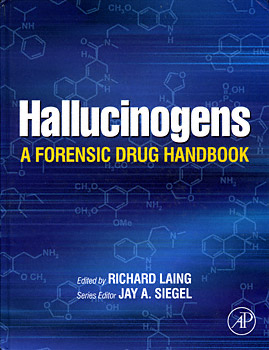
BACK COVER #
Hallucinogenic drugs have been used by many cultures and subcultures over the centuries--from ancient religious ceremonies to the enlightenment movement in the 1960s to today's all night "Rave" parties. They continue to be a major concern for law enforcement and social policy makers. Hallucinogens is designed to be a cross-disciplinary source of information and help. The text reviews the history of these drugs and their abuse, and then takes an in-depth look at the various hallucinogens including their chemical make-up, how they affect users, how they are manufactured and distributed, and how they can be detected and analyzed.Hallucinogens: A Forensic Drug Handbook is a comprehensive reference for everyone involved in the identification, investigation, and forensic analysis of hallucinogenic drugs. It covers the most commonly abused drugs such as LSD, MDMA ("Ecstasy"), and PCP ("Angel Dust"), as well as many lesser-known chemical substances that can be used to achieve similar effects.
Key Features:
- Brings together comprehensive information on hallucinogenic drugs in one convenient source
- Covers everything from abuse of these drugs to pharmacology, effects, forms, manufacturing methods, distribution, and forensic analysis
- Contains numerous illustrations, chemical structures, and analytical spectra for many of the hallucinogenic compounds discussed
- Includes contributions from many of the world's leading investigators and analysts
- Written for a wide audience including forensic toxicologists, investigators, lawyers, drug rehabilitation specialists, and more


